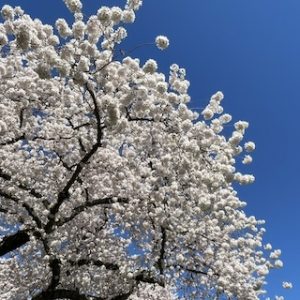 The Columbia City Yoga on-line Moving into Meditation class met this morning. We explored equanimity, one of our four essential qualities including loving kindness, compassion and altruistic joy. We can draw on the wisdom of our grandmother’s heart to respond to our experience with these qualities. Our commitment to the practice – to try, to fail and try again is what transforms the grain of reactivity into the pearl of equanimity.
The Columbia City Yoga on-line Moving into Meditation class met this morning. We explored equanimity, one of our four essential qualities including loving kindness, compassion and altruistic joy. We can draw on the wisdom of our grandmother’s heart to respond to our experience with these qualities. Our commitment to the practice – to try, to fail and try again is what transforms the grain of reactivity into the pearl of equanimity.
We continued to draw from Oren Jay Sofer’s book: Your Heart Was Made for This: Contemplative Practices for Meeting a World in Crisis with Courage, Integrity, and Love. Oren writes about equanimity as a centering stabilizing resource in our lives. It enables us to stay right on the edge of reactivity. We stay long enough to gain perspective and consider an appropriate response.
We drew inspiration from Roshi Joan Halifax’s essay, Equanimity: Walking the Tight Rope with a Grandmother’s Heart. Having a grandmother’s heart enables us “to love all equally.” Roshi is committed to this practice while knowing she will fail. She and many others continue working at this every day.
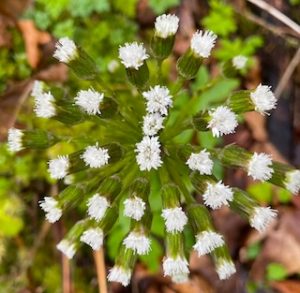 We heard poet Alison Luterman’s poem: Because Even the Word Obstacle is an Obstacle. This is a somewhat whimsical poem that brings the practice into every day life – the crowded lane in the public swimming pool. We can visualize the images of those who are “in the way” as they become the way, the way of all beings.
We heard poet Alison Luterman’s poem: Because Even the Word Obstacle is an Obstacle. This is a somewhat whimsical poem that brings the practice into every day life – the crowded lane in the public swimming pool. We can visualize the images of those who are “in the way” as they become the way, the way of all beings.
Guided Reflection
Last week we explored how the ability to be with what is – our patience – can help us in our struggles. Slow time in loving awareness can help the heart to open and the mind to clear. Like patience, equanimity can help us “learn to let go of things we can’t control and find balance.” Oren Jay Sofer writes about equanimity in his book: Your Heart Was Made for This: Contemplative Practices for Meeting a World in Crisis with Courage, Integrity, and Love.
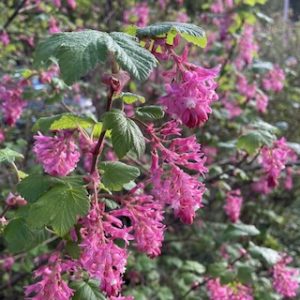 Equanimity connects intimately with life. . . giving the perspective to see a bigger picture, enough space to include all that we experience. . . . A wise heart knows the truth: conditions change without end. The more deeply we understand this, the less agitated we grow when things fall apart or change unexpectedly. We discover . . a spacious and grounded openness. Equanimity steadies us like the keel of a ship at sea. Storms may shake us but we don’t capsize.
Equanimity connects intimately with life. . . giving the perspective to see a bigger picture, enough space to include all that we experience. . . . A wise heart knows the truth: conditions change without end. The more deeply we understand this, the less agitated we grow when things fall apart or change unexpectedly. We discover . . a spacious and grounded openness. Equanimity steadies us like the keel of a ship at sea. Storms may shake us but we don’t capsize.
This week I’ve been reflecting on how meditation practice is also a practice of of intimacy. By intimacy I mean getting closer to the experience of being human. We sit with the truth of being, however pleasant or unpleasant it may be. Oren describes how being with our humanness can be fertile ground in which equanimity can grow:
. . . Equanimity grows at the edge of our capacity to bear with reactivity. We develop an inner balance by tolerating what throws us off – an unpleasant sensation, an irritating coworker or an unjust event. . . . The more we resist, the more it hurts until the heart surrenders. When we finally understand and acknowledge the truth – that this is how it is right now – our capacity for balance grows. When we are mindful of reactivity, it becomes the grain of sand that forms a pearl of equanimity.
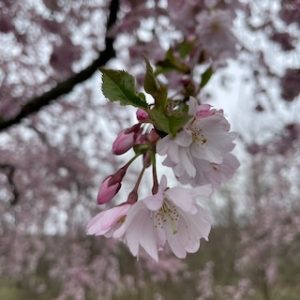 Roshi Joan Halifax teaches The Four Boundless Abodes of lovingkindness, compassion, altruistic joy, and equanimity. She believes we all have a “grandmother’s heart.” We are capable of seeing others with “grandmother’s eyes.” She writes:
Roshi Joan Halifax teaches The Four Boundless Abodes of lovingkindness, compassion, altruistic joy, and equanimity. She believes we all have a “grandmother’s heart.” We are capable of seeing others with “grandmother’s eyes.” She writes:
A good grandmother doesn’t take her life personally. . . . She has the heart of equanimity informed by lovingkindness, compassion, and joy in the well-being of others; this kind of grandmother within us offers whatever she can, without expecting anything in return.
Tara Tulku Rinpoche, a contemporary of the Dalai Lama, taught that equanimity is to love all equally. When I imagine loving everyone equally it gives me pause. How is that possible? I remember Roshi Joan’s response when she heard this teaching. She said: “Wow, that is a big practice. I am working on this every day, and mostly failing, but I am still showing up to the assignment.” It is good to know that there are countless loving beings who are practicing right now – working on this every day, failing and still showing up.
Here is Alison Luterman’s poem: Because Even the Word Obstacle is an Obstacle:
Try to love everything that gets in your way:
The Chinese women in flowered bathing caps
murmuring together in Mandarin doing leg exercises in your lane
while you execute thirty-six furious laps,
one for every item on your to-do list.
[The heavy-bellied man who goes thrashing through the water
like a horse with a harpoon stuck in its side and
whose breathless tsunamis rock you from your course.]
Teachers all. Learn to be small
and swim past obstacles like a minnow,
without grudges or memory. Dart
toward your goal, sperm to egg. Thinking, Obstacle,
is another obstacle. Try to love the teenage girl
lounging against the ladder, showing off her new tattoo:
Cette vie est la mienne, This life is mine,
in thick blue-black letters on her ivory instep.
 Be glad she’ll have that to look at the rest of her life, and
Be glad she’ll have that to look at the rest of her life, and
keep going. Swim by an uncle
in the lane next to yours who is teaching his nephew
how to hold his breath underwater,
even though kids aren’t supposed
to be in the pool at this hour. Someday,
years from now, this boy
who is kicking and flailing in the exact place
you want to touch and turn
may be a young man at a wedding on a boat,
raising his champagne glass in a toast
when a huge wave hits, washing everyone overboard.
He’ll come up coughing and spitting like he is now,
but he’ll come up like a cork,
alive. So your moment
of impatience must bow in service to the larger story,
because if something is in your way, it is
going your way, the way
of all beings: toward darkness, toward light.
What would it be like to think of those who get in our way as teachers? Imagine swimming past obstacles without grudges or memory. May our “moment of impatience . . . bow in service to the larger story, because if something is in [our ]way, it is going [our] way, the way of all beings: toward darkness, toward light.”
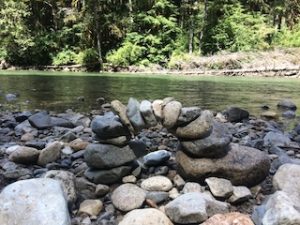 I invite you to take some time to find your center of gravity – a center which can hold the darkness and the light of being human. A posture in which you can be awake, aware and at ease. A posture for the body as a field of awareness. As you are ready, allow awareness to travel. Sense those areas of contact and support. Where do you feel grounded and stable? Perhaps connecting with the back body, sit bones, legs and feet. You might feel upper back, arms and hands. Allow awareness to rest upon sense organs: Eyes. Ears. Nose. Tongue. Skin. Mind.
I invite you to take some time to find your center of gravity – a center which can hold the darkness and the light of being human. A posture in which you can be awake, aware and at ease. A posture for the body as a field of awareness. As you are ready, allow awareness to travel. Sense those areas of contact and support. Where do you feel grounded and stable? Perhaps connecting with the back body, sit bones, legs and feet. You might feel upper back, arms and hands. Allow awareness to rest upon sense organs: Eyes. Ears. Nose. Tongue. Skin. Mind.
Can you invite your grandmother’s heart to fill this space of awareness? A space that can hold your embodied experience. There may be areas that are charged with energy. There may be agitation, anticipation. There may be a sense of heaviness, tiredness or torpor. There may be inner balance and clarity.
If emotions or thoughts are present how do they feel in Body? Heart? Mind? You may be meeting inner stillness. You may be flooded with feeling. Can you meet what arises with grandmother’s eyes. To see what is with just and loving attention. To see what’s in the way as the way of all beings. We share this human experience of pain and pleasure, suffering and joy. We also share the experience of inner balance, equanimity.
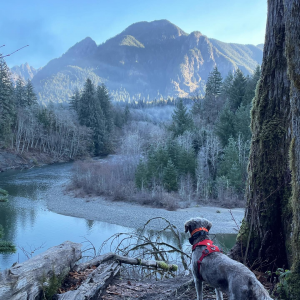 You might bring to mind an image that embodies the depth, wisdom, and spaciousness of equanimity: a mountain, . . . open sky, . . . your ancestors gazing at you lovingly . . . As you visualize, notice any sense of balance, depth or perspective the image calls forth. Notice where and how you experience this in your body.
You might bring to mind an image that embodies the depth, wisdom, and spaciousness of equanimity: a mountain, . . . open sky, . . . your ancestors gazing at you lovingly . . . As you visualize, notice any sense of balance, depth or perspective the image calls forth. Notice where and how you experience this in your body.
When you are ready call to mind a situation person or circumstance for which you’d like to have more equanimity. Keep coming back to the felt sense of perspective and balance. With equanimity’s support you can silently repeat a phrase that captures the essence of equanimity’s wisdom.
“This is how it is for me right now.”
“May I be at peace with things just as they are.”
Loving attention allows feeling or thought to be in the field along with whatever self-care that is needed. What kindness, patience or resolve can you offer yourself? There may be other qualities – love, tenderness, equanimity – you wish to cultivate. Is there a place where you can focus that is calming or that feels safe? Sometimes it can be opening closed eyes, taking a sip of water or touching Earth.
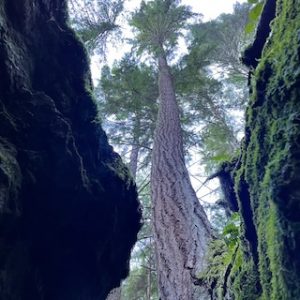 Each of us is part of a great field of awareness. We all suffer. We all want to be happy. We are all deserving of care. I invite you to give yourself kind attention. Time. Space. Presence. We may sense each other in the field of awareness. Abiding in the great field, we can know there is caring and being cared for. Take a breath or two to allow yourself to know this. You can allow any associations you have with caring, being cared for to surface in the field. You can connect with that loving grandmother being inside. In our practice, we accompany one another on the path.
Each of us is part of a great field of awareness. We all suffer. We all want to be happy. We are all deserving of care. I invite you to give yourself kind attention. Time. Space. Presence. We may sense each other in the field of awareness. Abiding in the great field, we can know there is caring and being cared for. Take a breath or two to allow yourself to know this. You can allow any associations you have with caring, being cared for to surface in the field. You can connect with that loving grandmother being inside. In our practice, we accompany one another on the path.
May we bow in service to the larger story, because if something is in [our ]way, it is going [our] way, the way of all beings: toward darkness, toward light.
